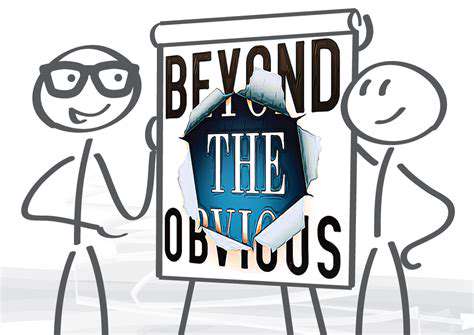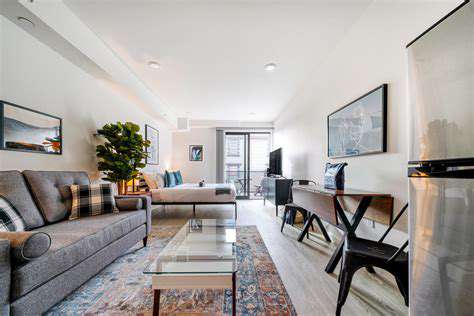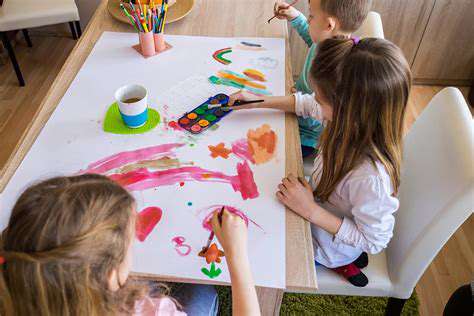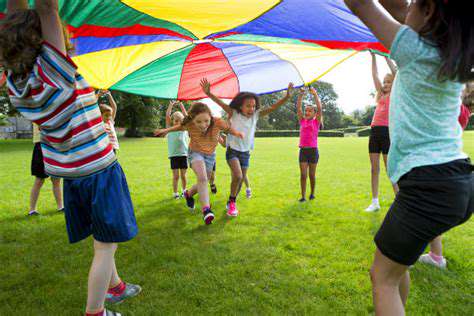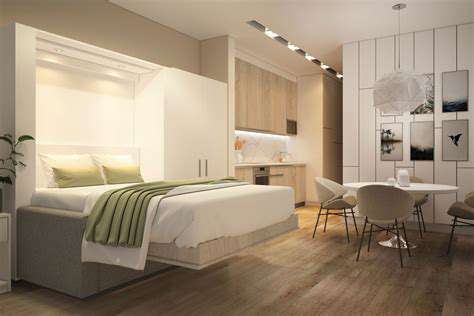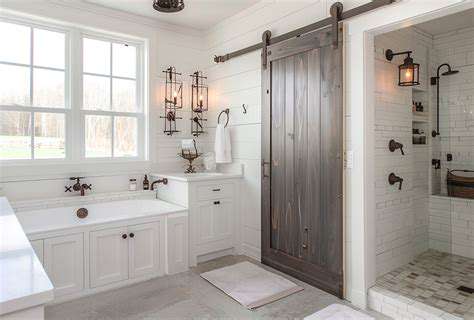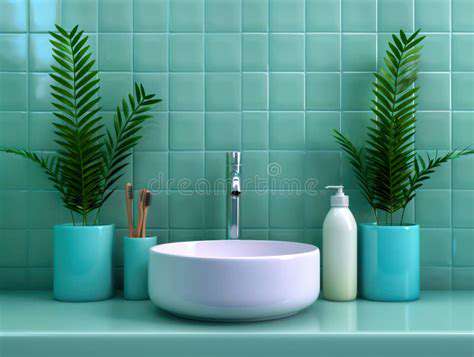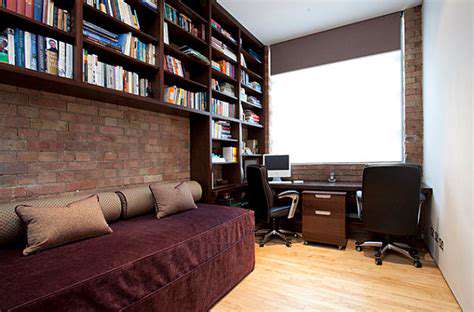Creative Concepts for a Children's Room That Supports Growth and Safety
Encouraging Imaginative Play
Designing spaces for development isn't just about looks—it's about crafting an environment that sparks curiosity and growth. When children have room to imagine, they build skills that last a lifetime. Play areas should invite creativity through varied materials like textured fabrics, modular blocks, and open-ended art supplies. These elements let kids experiment freely, developing problem-solving abilities while having fun.
Accessibility matters. Keep dress-up clothes at child-height in labeled bins, store building materials in clear containers, and rotate play props weekly to maintain interest. A well-organized space with clear pathways reduces chaos and encourages social interaction. Remember, the goal isn't perfection—it's creating a canvas where young minds can paint their own adventures.
Promoting Exploration and Discovery
Children are natural scientists. Their eyes light up when encountering water tables that demonstrate physics, or garden beds where they can track plant growth. Discovery zones work best when they engage multiple senses simultaneously. Try combining smooth stones with magnifying glasses, or set up a texture wall with samples of burlap, velvet, and corrugated cardboard.
Rotate sensory stations seasonally—autumn leaves for sorting, winter ice experiments, spring seed planting. This maintains novelty while teaching observational skills. Always include why questions in labels (Why do pinecones open when dry?) to stimulate critical thinking.
Supporting Social-Emotional Development
The physical environment directly impacts emotional wellbeing. Designate clear zones: a collaboration corner with large building mats, a quiet nook with beanbag chairs and emotion cards, and a showcase area for displaying creations. Color psychology matters—soft blues and greens calm, while warm yellows energize.
Incorporate feelings mirrors at child height with emotion labels, and teach conflict resolution through peace tables stocked with talking sticks. These tangible tools make abstract concepts concrete. Remember to include adult-sized seating at child-height tables—your presence during play validates their experiences.
Creating a Safe Haven: Prioritizing Safety First
Creating a Child-Friendly and Secure Environment
True safety balances protection with independence. Use rounded furniture corners, but also create yes spaces where toddlers can explore freely. Anchor heavy furniture to walls using anti-tip kits—these prevent 75% of tip-over accidents. Install motion-sensor night lights along pathways for nighttime safety without harsh lighting.
Emergency preparedness should be visible but not scary. Frame evacuation maps as puzzles, store first aid kits in red backpacks with stuffed animal mascots, and practice drills through storytelling (When the firefly alarm chirps, we crawl like caterpillars to the meeting tree).
Implementing Safety Measures for Different Age Groups
Safety evolves with development. For crawlers, use outlet covers that automatically close when plugs are removed. Preschoolers benefit from safety helper roles like checking that toys are put away properly. Elementary-aged children can lead hazard hunts using flashlights to identify potential risks—this builds ownership.
Create graduated zones of independence: a fully supervised block area for toddlers transitions to a big kid builder zone with tools like plastic hammers for school-agers. This scaffolding approach builds confidence while maintaining appropriate safeguards.
Encouraging a Culture of Safety Through Education
Transform safety lessons into engaging experiences. Host safety scientist days where children test helmet effectiveness on melons, or stage what if scenarios with stuffed animals making safe/unsafe choices. Children retain 70% more information through participatory learning versus lectures.
Develop family safety challenges—monthly home inspections with checklists, or secret agent missions to identify emergency exits in public spaces. Celebrate successes with safety superhero certificates to reinforce positive behaviors.
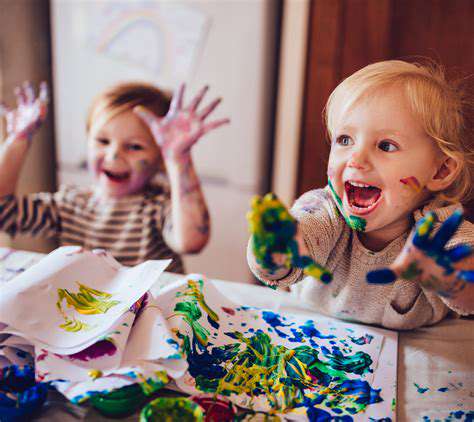
Smart Storage Solutions: Organization and Accessibility
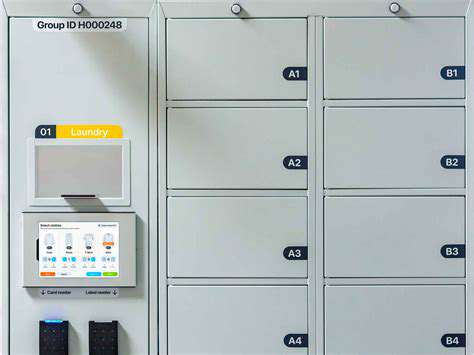
Maximizing Space with Vertical Storage
Wall-mounted systems transform clutter into displays. Try pegboards with colorful bins for art supplies, or floating shelves with picture labels for toys. Vertical storage isn't just functional—it can become an interactive learning tool when items are organized by color, shape, or category.
In shared spaces, assign each child a vertical territory using washi tape borders. This teaches personal responsibility while preventing sibling squabbles over shelf space.
Innovative Drawer and Cabinet Organizers
Customize storage to match developmental stages. Toddlers need see-through bins with photo labels, while readers can manage word-labeled sections. For shared spaces, color-code by child (blue bins for Emma, green for Liam) to streamline cleanup.
Repurpose household items—ice cube trays hold small toys, muffin tins sort craft supplies, and over-the-door shoe organizers store art materials. This approach saves money while teaching creative problem-solving.
Customizable Shelving Solutions
Adjustable systems grow with your child. Start with low shelves for toddler access, then reconfigure as they grow. Incorporate growth markers—when the child can reach the third shelf, they earn new storage responsibilities.
Use tension rods in closets to create adjustable hanging storage for dress-up clothes or artwork displays. This flexibility accommodates changing interests without requiring new furniture.
Multi-Functional Storage Furniture
Choose pieces that serve dual purposes—window seats with book storage, benches with toy compartments, or beds with pull-out drawers. These space-savers are particularly valuable in small homes, where every square foot needs to work hard.
For shared rooms, use room dividers with built-in shelving. These create privacy while providing display space for personal treasures, helping each child maintain their identity in a shared environment.
Sustainable Storage Solutions
Involve children in creating eco-friendly storage. Decorate recycled cereal boxes as magazine holders, or paint wooden crates for book displays. This teaches environmental responsibility while personalizing their space.
Host storage swaps with other families to exchange outgrown organizers. This circular approach reduces waste while refreshing your storage solutions at no cost.
Read more about Creative Concepts for a Children's Room That Supports Growth and Safety
Hot Recommendations
- Trendy Kitchen Interiors: Open Concepts and Smart Storage Solutions
- Expert Multi Functional Room Ideas for Combining Entertainment with Fitness
- Modern Home Office Inspirations for a Study That Merges Work and Leisure
- Modern Bathroom Design Ideas for Optimizing Small Spaces and Safety
- Expert Strategies for a Children's Room That Inspires Growth and Imagination
- Modern Bathroom Inspirations for a Space That Prioritizes Safety and Efficiency
- Creative Multi Functional Space Ideas for a Room That Combines Gym and Media
- Modern Techniques for a Multi Purpose Room That Enhances Home Entertainment and Fitness
- Expert Guide to Balancing Modern Art and Functional Living Room Layouts
- Expert Tips for a Children's Room That Balances Play, Learning, and Security
